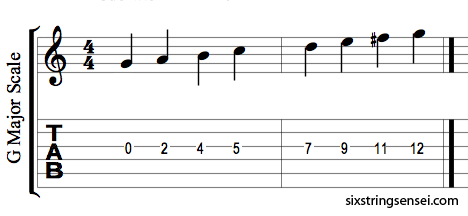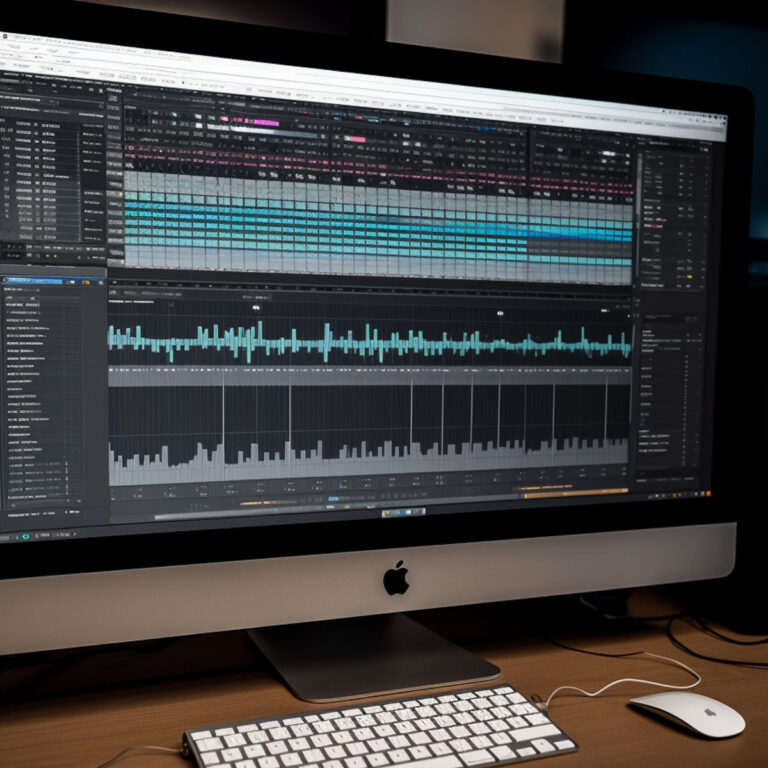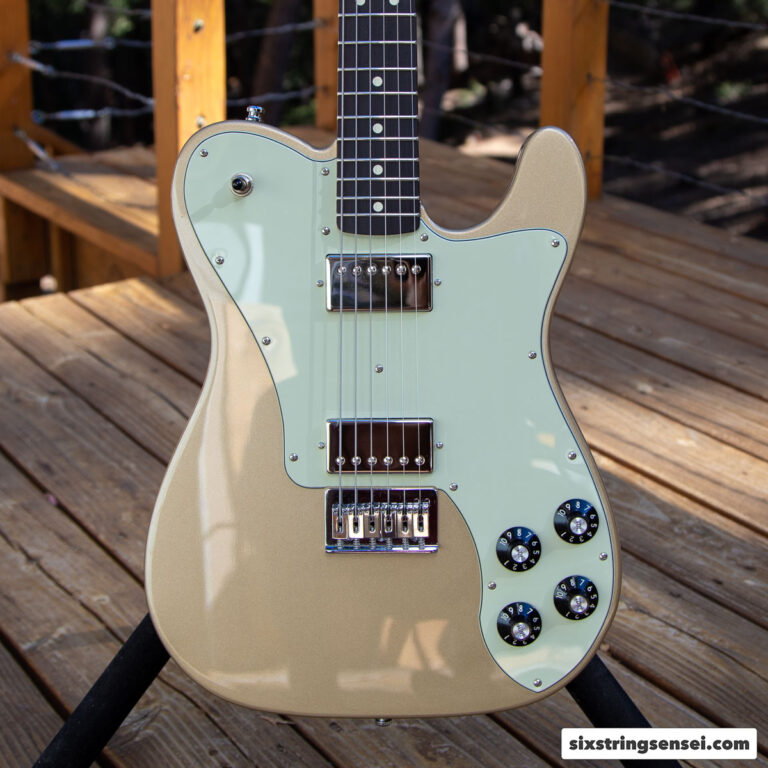Major Scale Intro
There are basically 12 notes in music. So all modern music is based out of those 12 notes. All scales are born out of those 12 notes as well. These 12 notes are part of the chromatic scale. It would be safe to say that all the scales in western or modern music are born out of the chromatic scale as it contains all the notes these scales use. It’s as simple as applying a specific formula to the chromatic scale and you get the resulting scale. More on that soon… But first…
The major scale is the first scale you should learn. It may not necessarily be the most used scale as far a guitar solos go, but it’s definitely vital. The major scale serves a very important relationship with most other scales and is the basis for an endless number of songs.
The major scale is the basic DO – RE – MI – FA- SOL- LA- SI – DO that you probably learned in school. The important part is that now you must understand where it comes from and why. Usually, I find that understanding how and why something works is the best way to remember how to use it.
The major scale has 7 notes. Now we must take a look at those 12 notes of the chromatic scale I mentioned earlier. This is how the chromatic scale looks:

Notice that there are only 12 notes. If you counted 13 it’s because you counted the last C. Don’t count that one as it is simply another C like the first one only an octave up in tone. An Octave is an area of sound where the notes or pitches lie in. Every time you go from the beginning note of the scale to the last you’ve gone up an octave. So basically, the first C is one octave below the final C and so on.
Between each of the notes in the chromatic scale there is a half step. A half step is the smallest unit of space from one pitch to another. In guitar terms it would be 1 fret. You can also notice in the diagram above that between each Natural note (notes that do not contain sharps # or flats b) there is a sharp/flat note. These notes are calles Accidentals. Why? I don’t know. Some dude, probably thought they came by accident! These notes, although named differently, such as C#/Db or D#/Eb are basically the same. In other words C# and Db are the same note and D# and Eb are the same note. And F# and Gb are also the same note. Don’t forget that between E and F as well as between B and C there are no sharp or flat notes because there is only a half step between these notes. There are instances where a note may be called Cb, Fb or E# although technically they don’t exist, but that goes way beyond the scope of this lesson. So don’t worry about this right now.
The main difference between the chromatic scale and all other scales is that the chromatic scale has all the notes because each step is of the smallest possible. All other scales use a different combination, or formula, of half and whole steps to pick out the notes. It’s as simple as picking the notes out of the chromatic scale in order skipping or picking notes according to the formula. The formula for the major scale is this:
W – W – H – W – W – W – H
This means, whole step, whole step, half step and so on. So all you have to is go through the chromatic scale starting on whichever note you’d like and going from one note to the next while either picking up the next note in line or skipping to the next according to the formula. If the formula shows a W then you skip from one note to the next because you need to move one whole step. In other words, 2 half steps or 2 frets.
If you start on C, and jump one whole step (jump over C#/Db) the next note is D. Then jump another whole step and you’re on E. Now the formula calls for a half step, so no skipping, and this brings you to F. Then we have to jump another whole step to G and another whole step to A and then the last whole step in the formula takes you to B. The last half step you see in the formula will make you connect the first note of the scale to the same note one octave up, and that would be C again.
And there you have it! The major scale in C: C – D – E – F – G – A – B – C
To give you an idea, this is how applying the formula looks:
If you do this with all the notes of the chromatic scale you will get 1 set of notes per each key or root note. To give you an example, if you start in G you’ll get this set of notes:
G – A – B – C – D – E – F# – G
Take a look at the following diagram to see same G Major Scale in Tab. It’s played on only one string starting on an open G and ending on the G of the 12 fret.

The tab above can be also called, the Ionian Mode which is nothing more than the major scale. The Ionian mode is the first mode or position of the major scale. Once this begins to sink in, you can move on to learn the seven modes of the major scale. One for every note of the scale.
This may seem a bit confusing at first but don’t freak out. It’s not as hard as it seems. Put some time on learning this and when you start understanding it you’ll notice how important it is.





